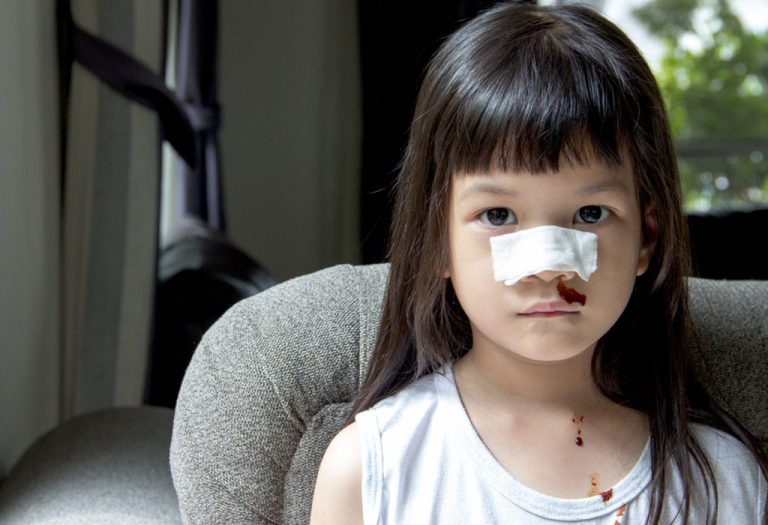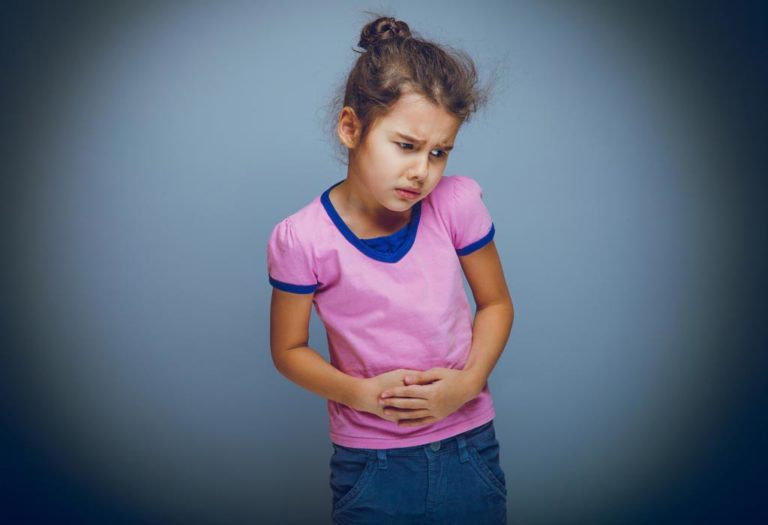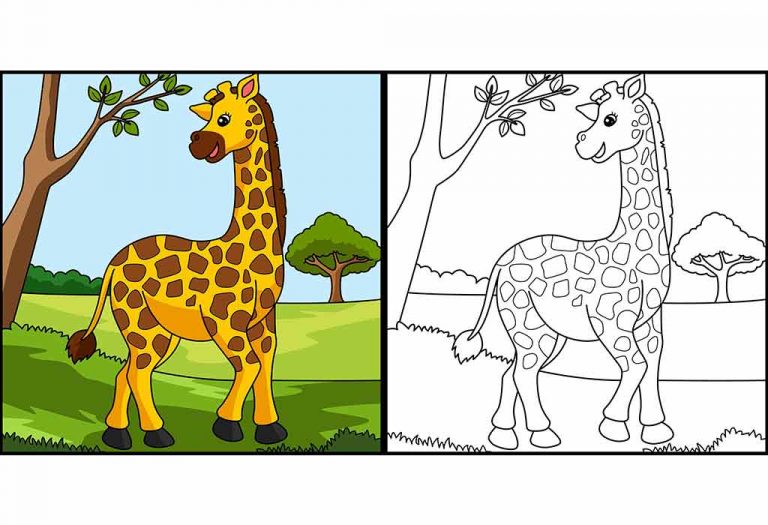Shingles in Children
- What is Shingles?
- Is Shingles Contagious?
- What Are the Causes of Shingles?
- What Are the Symptoms of Shingles?
- How is Shingles in Children Diagnosed?
- Complications of Shingles in Children
- What Are the Side Effects of Shingles?
- Treatment of Shingles in Children
- Home Remedies for Shingles
- Care for Shingles in Children – Dos and Don’ts
- How to Prevent Shingles
- When You Should Call a Doctor
- FAQs
Chickenpox was once very common among children, but now that the VZV (Varicella Zoster Virus) vaccine is available, its frequency has reduced. But kids can still get shingles. Learn more about this condition and find out how you can tackle it.
What is Shingles?
Shingles is a skin rash which is caused by a viral infection of the nerves below the skin. It is caused by the ‘Varicella zoster virus’, which also causes chickenpox. While it can appear on any part of the body, it usually appears as a stripe on one side of the back or chest and even around the eyes in the form of a rash or blisters. Shingles in babies and children are often mild; the chances of severe complications are rare.
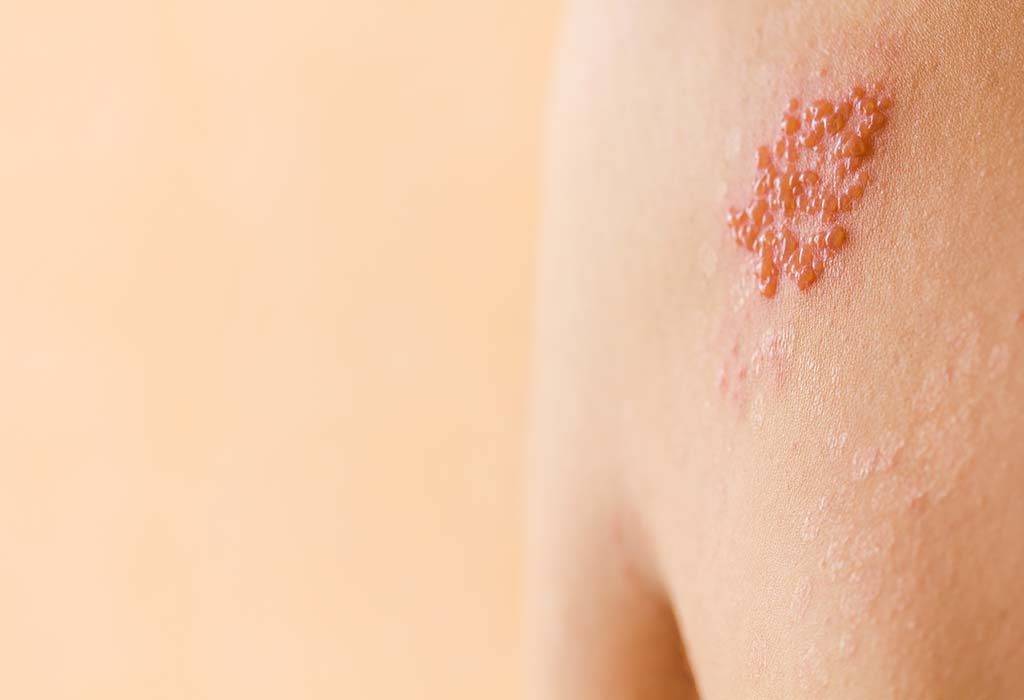
Is Shingles Contagious?
As shingles are caused by the same virus that causes chickenpox (which is contagious) you may wonder if shingles is contagious. While shingles isn’t contagious, the virus that causes it certainly is, leading to the person exposed to it to develop chickenpox (if they haven’t had it before or haven’t taken the vaccine to prevent it).
What Are the Causes of Shingles?
These are some causes of shingles:
1. Varicella Zoster Virus
The virus that causes shingles is the same one that causes chickenpox. It is related to the Herpes virus, which is what gives the condition its other name, “Herpes Zoster.”
2. Weak Immune System
Those who have medical conditions that weaken or attack the immune system and those recovering from an illness are more prone to the risk of getting shingles.
3. Chickenpox
The virus that causes chickenpox will remain in a person’s body for the rest of his or her life, though it will remain dormant. There are instances when the virus will flare up and cause shingles.
What Are the Symptoms of Shingles?
If your child has shingles, here are some symptoms they will show:
- Burning
- Itchiness
- Pain
- Blisters
- Scabbing
- Crusting
- Rashes
- Fever
- Loss of appetite
- Tiredness and lethargy
- General aches
How is Shingles in Children Diagnosed?
Doctors will often only need to take a look at the rash or blisters, and they will be able to diagnose the problem as shingles. If the rashes are not yet present, your doctor will ask your child about the pain he is experiencing to determine if it is related to the nerves. There are times when the doctor will take scrapings from the rash or the pus from the blisters in order to have the samples tested to confirm the diagnosis.
Complications of Shingles in Children
Here are some complications that can occur because of shingles in children:
1. Skin Infections
There are times when the skin rash that is caused due to shingles get further infected by bacteria. This will lead to severe damage in the skin cells of the child and thus, result in a skin infection.
2. Post-herpetic Neuralgia
The rashes or blisters that are caused by shingles can lead to permanent nerve damage. In such cases, even after the skin irritation is gone, there will still be a tingling sensation in the areas that were once infected.
3. Neurological Problems
If a child has severe nerve damage due to shingles appearing on the face, it could lead to loss of hearing, facial paralysis and even cause the brain to become inflamed, a problem that is called encephalitis.
4. Loss of Vision
Shingles that is around the eyes can lead to severe damage as the optic nerves and the eyeballs can get damaged. This will cause either blurry vision or blindness.

What Are the Side Effects of Shingles?
Some other side effects of shingles are:
- Weight loss
- Depression
- Insomnia
- Problem with balancing if the ears have been infected
- Eye infections
Treatment of Shingles in Children
Here are some ways in which shingles can be treated:
- Topical treatments such as creams, sprays or skin patches may be suggested by some doctors. Oral medications are also given in order to lessen the pain that is caused by shingles. Some antidepressants such as tricyclic antidepressants or ibuprofen may be suggested by your doctor, and these are easily available over the counter. Avoid using aspirin as it can lead to Reye’s syndrome.
- Antiviral medications and steroids may be prescribed if your child’s rash has spread to the eye area. This will reduce the spread of the infection.
- If your child is suffering from severe pain, your doctor may prescribe medications such as morphine, gabapentin or oxycodone.
- To reduce inflammation of the skin, topical corticosteroids may be prescribed; but these should only be used after a doctor’s recommendation. Follow the doctor’s instructions very carefully if this is prescribed for your child.
- Antiviral medications like Famciclovir (Famvir), Acyclovir (Zovirax) and Valacyclovir (Valtrex) can aid in minimizing any complications caused by the VZV. They will also be able to help speed up the healing process, though they will not be able to rid the body of the virus itself.
Home Remedies for Shingles
Here are some home remedies you can try to soothe your child’s symptoms and help him heal faster:
1. Cold Compress
Use a cold compress with some vinegar to bring relief to the burning or itching sensation that is caused by the rash.
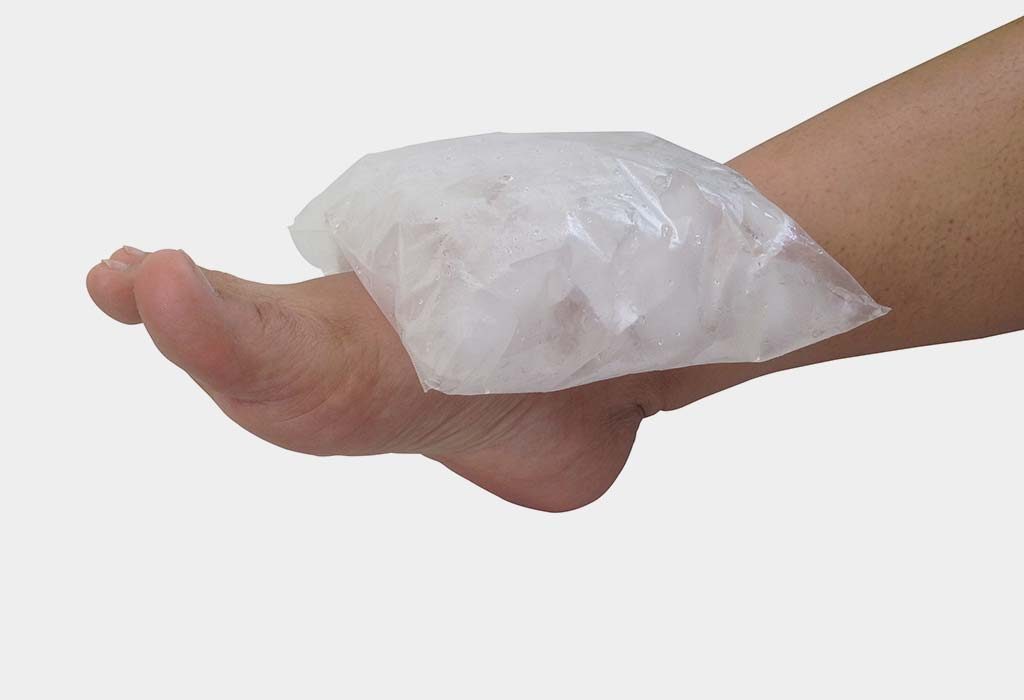
2. Calamine Lotion
Apply this lotion to any areas where there are blisters or rashes forming.
3. Oatmeal Baths
Allow your child to soak in a warm bath that is filled with raw or ground oats in order to help reduce the itching sensation and to help heal the rash.

4. Aloe Vera Gel
Either Aloe Vera gel or vitamin E can be used to reduce the itching sensation. Consult with your doctor before you go ahead with this.

5. Cornstarch or Baking Soda Paste
Using either cornstarch or baking soda, make a paste where you use two parts cornstarch or baking soda and one part water. Apply this and leave it on for about 15 minutes. Rinse it off with cool water.
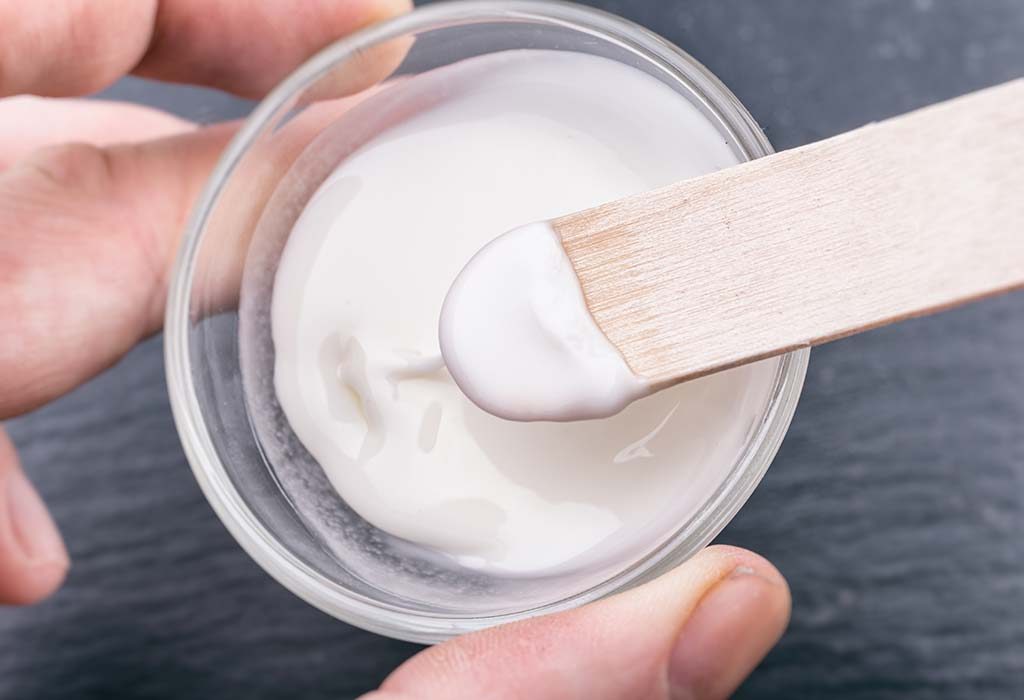
Care for Shingles in Children – Dos and Don’ts
The home remedies and the treatments will be able to reduce the physical discomforts of children, but they will still need a lot of care at home. Here are some ‘dos and donts’ that may help you care for your little one at home:
1. Care – Dos
Here are some home care methods you can try:
- Ensure to keep the infection clean and dry so that it does not spread to other parts of your child’s body.
- You should use cool compresses, ice that is wrapped in a cloth or a frozen bag of veggies if your child needs relief from the burning and itching.
- Make sure that you use the medications that are prescribed by your doctor in the way and in the dosage that have been instructed.
2. Care – Don’ts
Here are some home care don’ts:
- Do not touch or pick at the blisters of the scabs formed.
- Do not use bandages or plasters on the rashes or blisters.
- If pus is coming out of the blisters, do not send your child to school.
- Do not use antibiotic creams because this can only slow the healing down.
How to Prevent Shingles
The best way to reduce the risk of your child getting shingles is to give them the VZV shot. If your child has had chicken pox, however, the virus will already be in the body, and it may strike if the immune system becomes weakened for any reason. Keeping your child healthy will be very helpful when it comes to preventing shingles from occurring. Make your children keep their distance from anyone who has shingles or chicken pox even though he may have already had the vaccine.
When You Should Call a Doctor
Although shingles in toddlers and children can resolve itself within a few weeks, there are instances when it is important that your child sees a doctor. Here are some:
- If the rash caused by shingles is still present and shows no sign of clearing even after two weeks
- Doubt if the rash is shingles or not
- A severe rash on the face or near the eyes
- Painful or itchy rash
- If the rash looks infected and your child is generally sick
- If rashes are a side effect of another medical condition or side effect of some kind of medication
FAQs
Here are some frequently asked questions:
1. Can a Child Get Chicken Pox from Shingles?
A child who has never had chicken pox before and has not been vaccinated against the virus can get chicken pox from someone with shingles.
2. Can You Prevent Shingles from Spreading to Others?
Other than the point mentioned above, the only way a person can spread shingles to another is if the other person comes into direct contact with the rash while it is in its blistering phase.
3. Can Babies Get Shingles from Adults?
Babies who have not been vaccinated against VZV can get chickenpox from an adult with shingles.
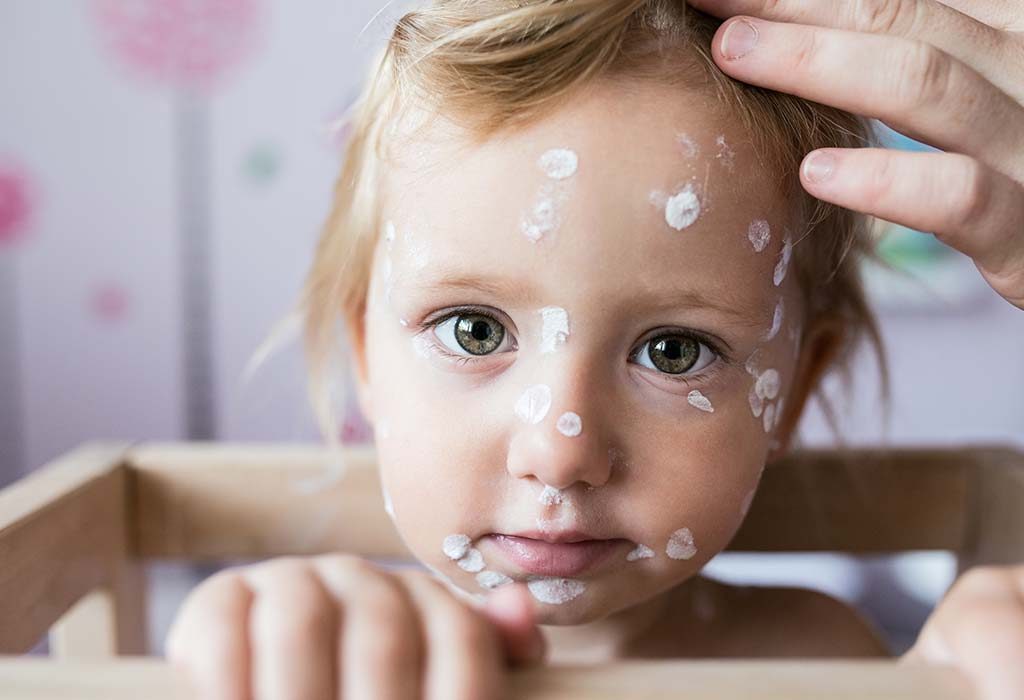
4. Can An Infant Who Has Never Had Chicken Pox Get Shingles?
No, this cannot happen. Only those who have already had chicken pox will get shingles.
5. How Long Does Shingles Last in Children?
In most instances, the infection will run its course and will go away on its own within a month, but there are treatments available to help speed up the healing process and lower the risk of complications.
Shingles is a very unpleasant infection to have as it is very painful, so if your child has it, be sure to make him as comfortable as possible, and help him heal by boosting his immunity with a good diet and plenty of rest.
Also Read: Recurring Fever in Children







